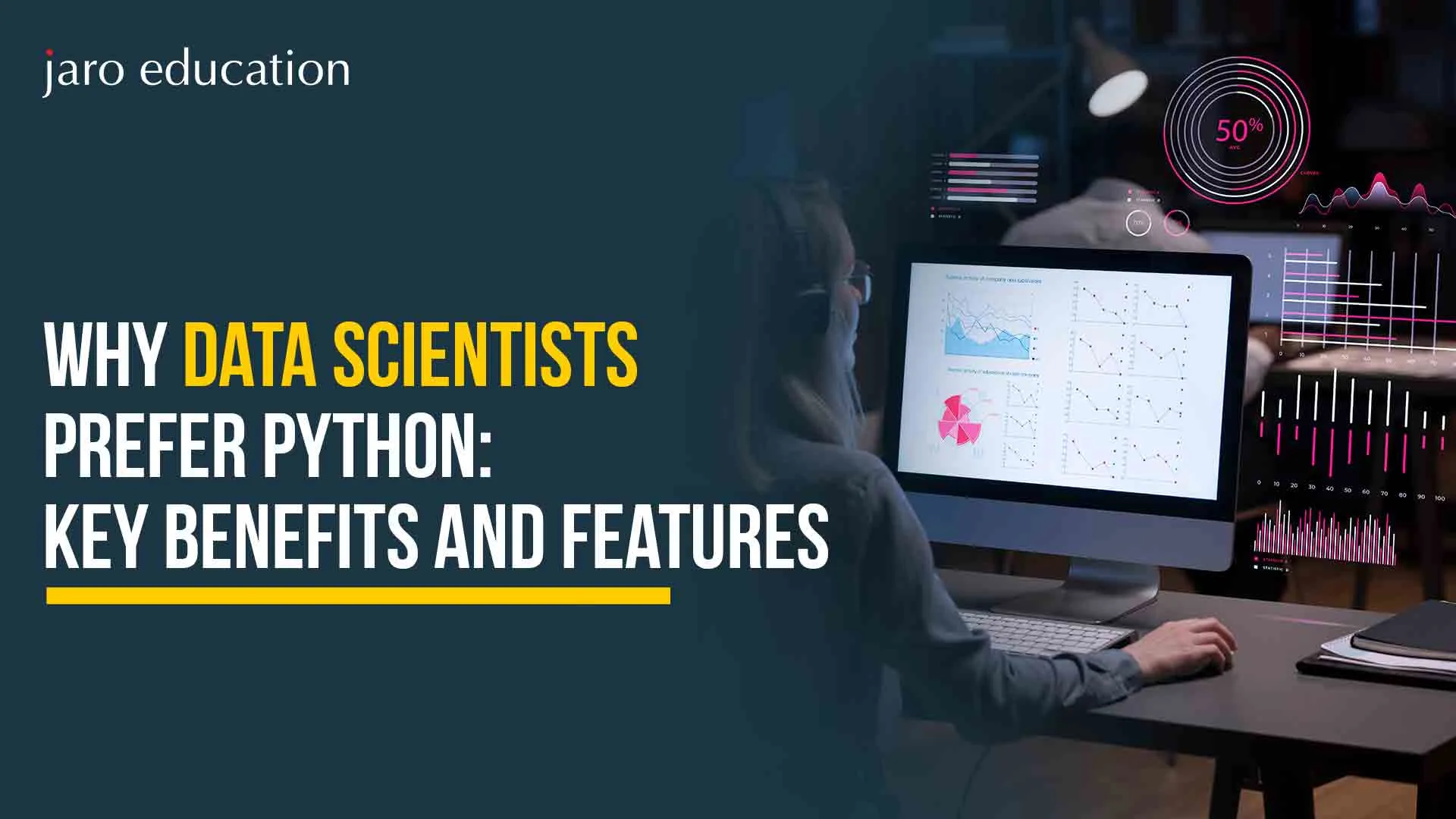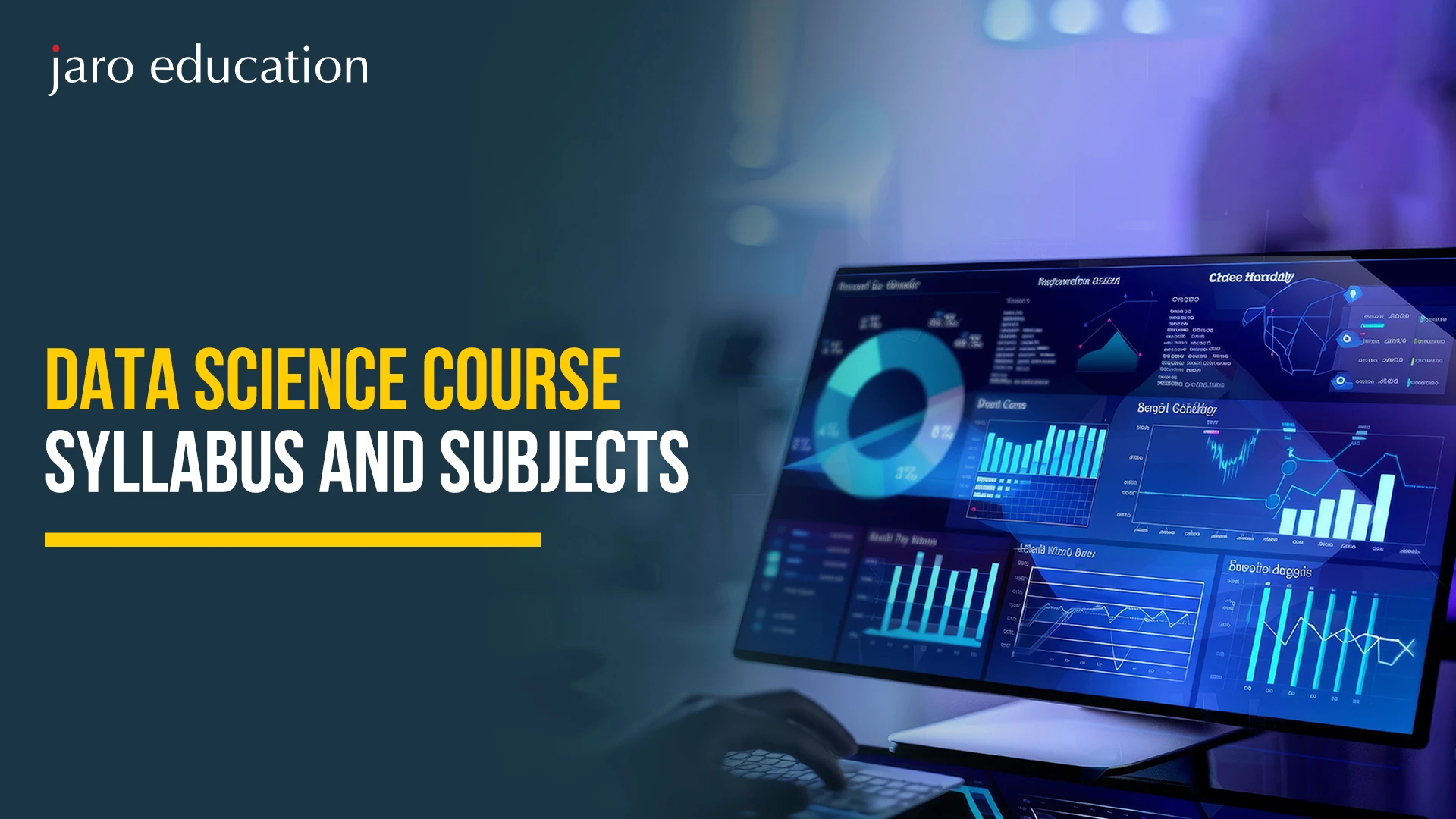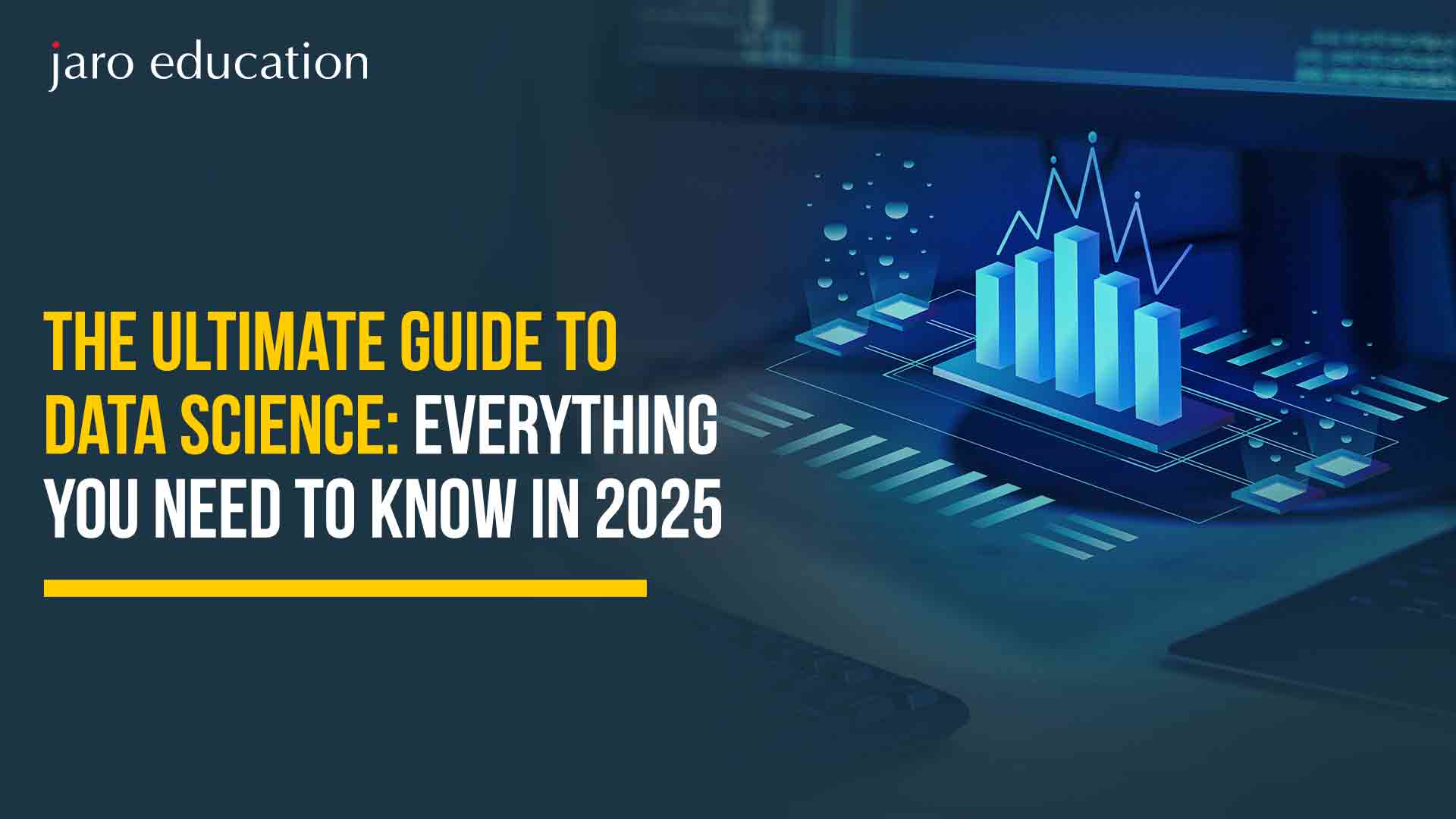Data Scientist vs Software Engineer: Key Differences
Table of Contents
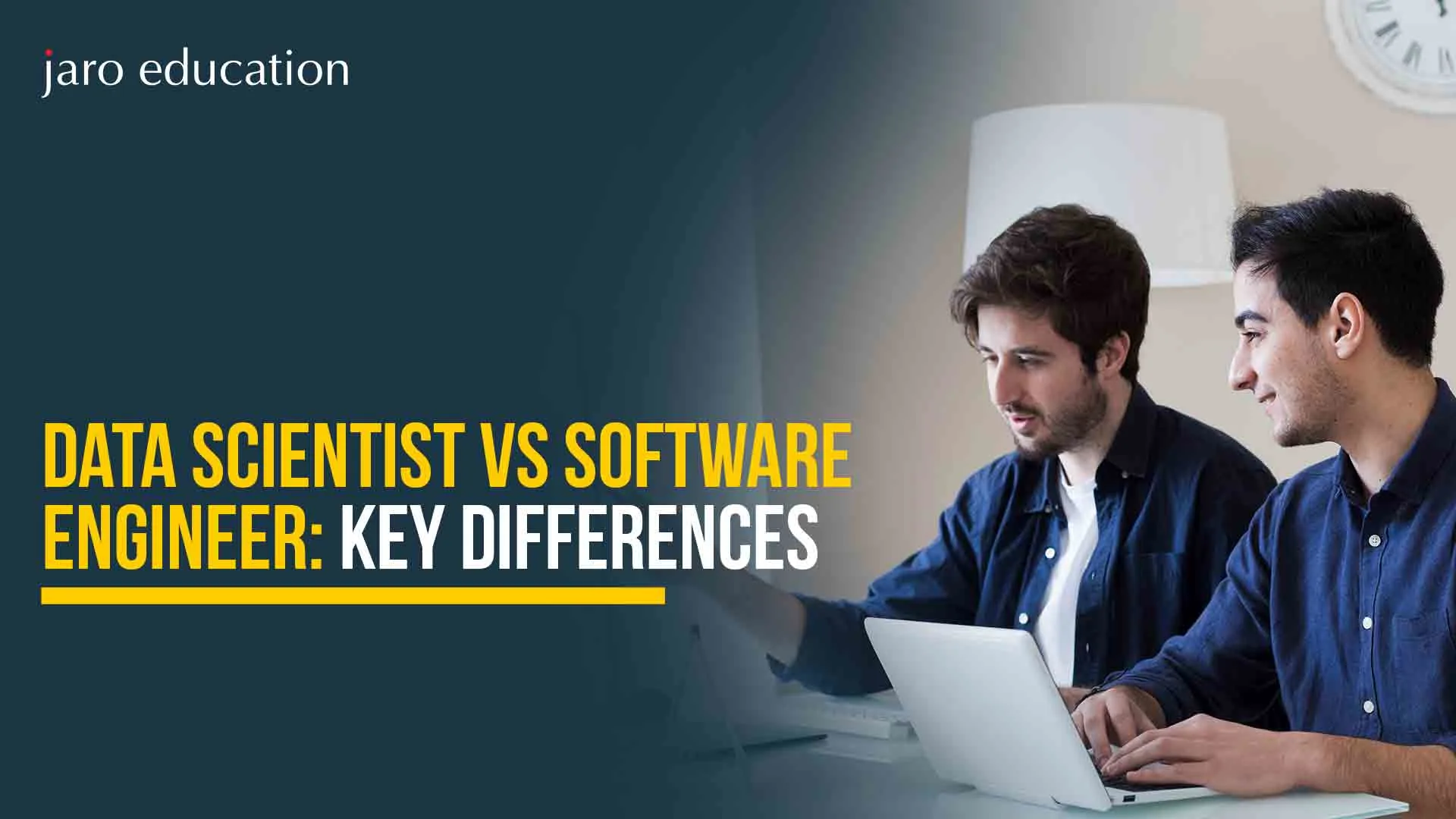
- jaro Education
- 16, March 2024
- 2:00 pm
In the current world filled with technology, two professions are quite likely to raise some questions and discussions among people: Data Science vs software engineer. The two disciplines have good opportunities, excellent wages, and demand across industries. Still, they demand a variety of abilities, duties, and mentalities. When you have to choose between a career as a data scientist vs software engineer, and a software developer, it is essential to realize that they differ in essentials.
Here in this blog, we are going to unravel the differences between Data Science vs software engineer and career opportunities, and how you can select the best according to your interest and objectives. As a student, job seeker, or any other technological buff, this comparison should assist in making an informed decision about the future.
What is Data Science?
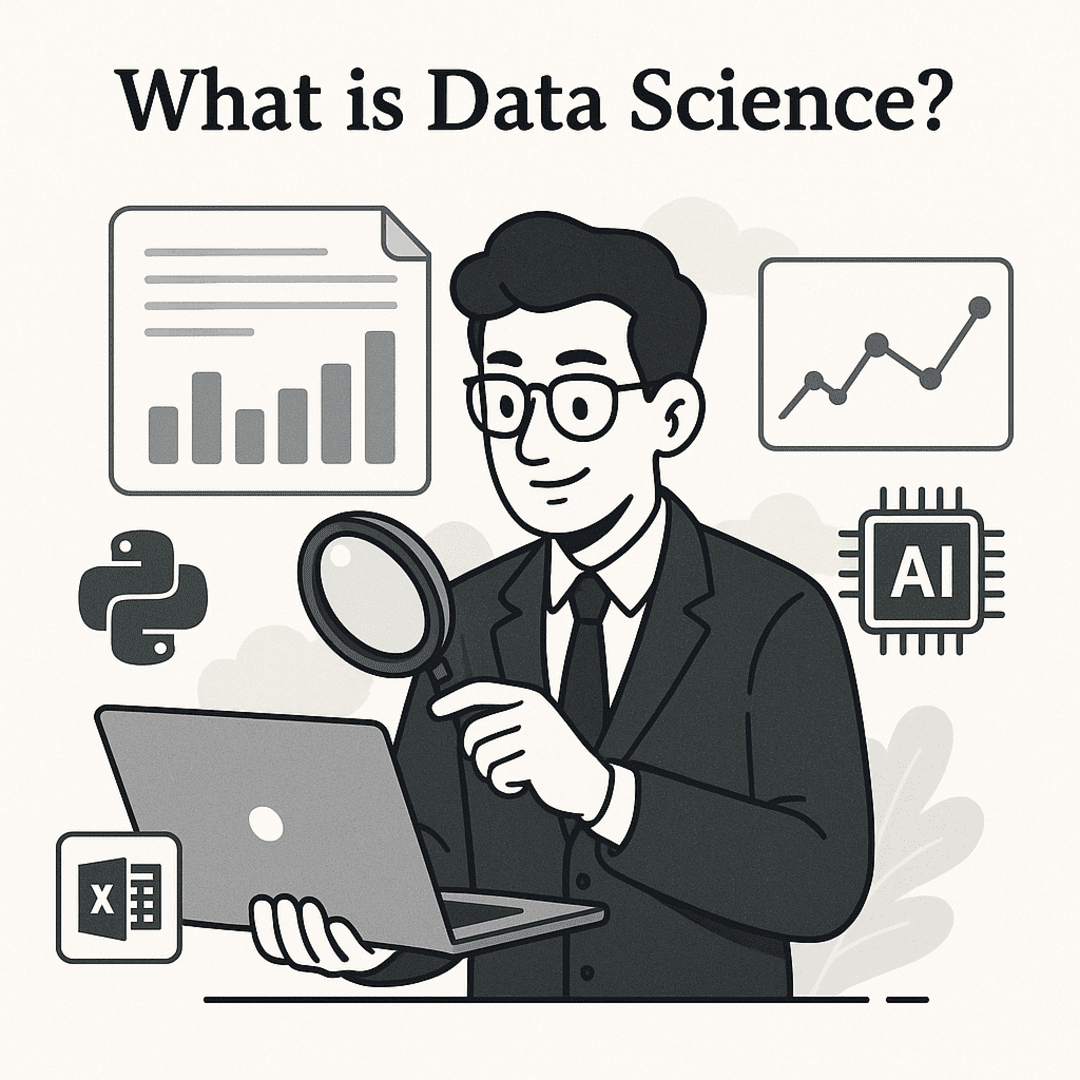
A data scientist is a type of detective who examines tonnes of information, asks the right questions, and uses tools such as Python, Excel, or AI models to locate answers. They may be used, as an example, to assist a company to understand which of its products are selling the best or, in the case of a hospital, determine which patients are feasible to require immediate attention.
Fundamentally, data science addresses the following kinds of questions:
- What happened? (Descriptive Analytics)
- The question is, why does it occur? (Diagnostic Analytics)
- So what is going to happen? (Predictive Analytics)
- How do we achieve this? (Prescriptive Analytics)
Data scientists vs software engineers employ Python, SQL tools, machine learning algorithms, and visualization tools, such as Tableau or Power BI, to render data intelligible and operable to businesses.
What is a Software Engineer?

A Software Engineer is the one to speculate, create, examine, and uphold software applications, systems, or platforms that execute across computers or devices. They use the concepts of computer science and engineering to produce efficient, reliable, and scalable software, specific to the needs of the users.
The programming languages used by software engineers are Java, Python, C++, JavaScript, among others, as well as such tools as Go, Docker, and IDEs that allow developers to create anything starting from mobile applications and websites and ending with operating systems and enterprise software.
They normally work:
- Appreciation of user needs
- Computing and code debugging
- The work is done in groups (developers, testers, designers)
- Installation and service of software products
- All the guarantees of performance, security, and usability
Essentially, software engineers convert ideas into digital working products, and thus, they are critical in determining the technology we use daily, including banking applications and websites, social media networking sites, and so on.
How are Data Science and Software Engineering related?
Data Science vs Software Enginer are not the same in the sense that they represent different disciplines or areas, but they tend to intertwine with each other in the technological world.
This is the way they are connected:
- The two Deal with Programming
Both someone who is a data scientist vs software engineer write software: a data scientist might write Python or R to study data and machine learn, whereas a software engineer might write Java, C++, or JavaScript to make applications.
- Data Product Development
Software engineers can take those models, which are built by data scientist vs software engineer, and create usable products such as applications that can recommend what should be watched next or can detect fraud.
- Joint Tools and Practices
Both of these account the tools such as Git as a version-control tool, cloud services such as AWS or Azure, and so on successful practices as testing, documentation, and automation.
- Team Collaboration
Other companies will have data scientist vs software engineer collaborating in data science. An example is a data scientist software engineer may produce a predictive model, and the software engineer would incorporate it in a mobile application or web page.
- Problem Solving
Data science and software engineering are both problem-solving disciplines; in one case, you have to analyze data to find the solution, and in the other case, the task is to develop a system to integrate the solution into practice.
Briefly said, data science and software engineering are two dissimilar sides of the same coin- data gives you the answers, and software will turn these answers into reality.
Differences Between Data Scientist vs Software Engineering
Apparently, on the surface, these two disciplines seem identical, and they are both based on the application of technology and programming. Nevertheless, there is also a wide gap between them in terms of focus, methodology, and application. To know more about the differences between these two disciplines, we are going to compare software engineering and data science by such aspects of the education you will need, the salary increase you will get about data scientist vs software engineer
Aspect | Data Scienctist | Software Engineering |
Primary Focus | Extracting insights from data | Designing and building software applications |
Goal | Analyze and interpret data to support decisions | Develop functional, reliable, and scalable software systems |
Core Skills | Statistics, machine learning, data analysis | Programming, system design, software architecture |
Programming Languages | Python, R, SQL | Java, C++, Python, JavaScript |
Tools Used | Jupyter, Pandas, Scikit-learn, Tableau | Git, IDEs, Docker, Jenkins |
End Product | Reports, predictions, data models | Applications, systems, APIs |
Data Handling | Works heavily with large and messy data | Deals with structured inputs and outputs |
Problem-Solving Approach | Data-driven and experimental | Logical, structured, and rule-based |
Collaboration With | Business analysts, domain experts, and engineers | Designers, developers, testers |
Common Industries | Finance, healthcare, e-commerce, marketing | Tech companies, startups, enterprise software firms |
Education Background | Statistics, mathematics, data science, computer science | Computer science, software engineering |
Output Evaluation | Accuracy of predictions, model performance | Functionality, performance, and usability of software |
What is the Work of a Data Scientist?
A data scientist is important in transforming raw data into informative ideas that assist a business make better decisions. Their activities incorporate both data analysis, programming, statistics, and machine learning. The following is a list of what a data scientist software engineer is usually expected to do:
- Data Cleaning and Collection
They collect information of various sources such as databases or web servers or APIs. And at that point, they will clean and preprocess data to ensure that they delete any errors, duplicates, or missing values–because only clean data will lead to successful data analysis.
- Exploration and data analysis
They discover patterns, trends, and correlations by using such tools as Python, R, Excel, or SQL. It is here where they start to know what the data is telling them.
- Modeling Predictive Models
The machine learning algorithms allow them to develop models that will be able to make predictions about the future, such as customer behaviour, product demand, or risk values.
- Data Visualization
Data scientists can convert abstract numbers into a graphical representation in simple charts and dashboards such as Tableau, Power BI or Matplotlib. These images will assist the stakeholders in making sense of the insights in a short period.
- Communicating Insights
One of the largest components of work is to translate their findings to non-technical teams – to marketing, sales, or finance departments, so the company could take any possible actions based on the information.
- Decision Support
They assist business organizations in making evidence-based decisions, be it the launching of a new product, the selection of the correct customers or optimization of operations.
- Synergization with Teams
Data scientists and software engineers collaborate with the engineers, business analysts, product managers, and other departments to match the technical solutions with business objectives.
Unlock Your Data Career with IIM Kozhikode’s Professional Certificate Course
Being a Professional Certificate Programme in Advanced Analytics & Business Intelligence at the IIM Kozhikode, it is a programme that is targeted towards those who are practitioners in business management and related fields, giving them the much-needed skills in business analytics and data science. The subject content aims at upskilling data-informed decision-making, with an inclination towards minimal interruption to the daily work tasks. This will be approached in terms of actual application of the methods and instruments with a bare minimum of a technical and mathematical approach. This qualification-enhancing programme will offer intensive theoretical, practical, and on-the-job training on the different data handling methods, programming with the use of powerful tools (e.g., Tableau, R, and Python), statistics, machine learning, deep learning, and business use of deep learning. This programme combines hands-on live interactive classes with face-to-face immersive learning in order to find a middle ground between classroom teaching and technology-assisted one.
Program highlights:
- Certificate of Completion from IIM Kozhikode
- Executive Alumni Status from IIM Kozhikode
- Hands-on live interactive classes
- Rigorous Pedagogy— a blend of theoretical and practical approaches
- Real Life Case Studies like Harvard Business Educators
- 3 Days Campus Immersion
- Peer-learning & networking opportunities with industry experts
Eligibility criteria:
- For Indian Participants – Graduates (10+2+3) or Diploma Holders (only 10+2+3) from a recognised university (UGC/AICTE/DEC/AIU/State Government/recognised international universities) in any discipline.
- Minimum of 1 year of work experience (after graduation) as of the programme date, i.e., technical orientation date.
Jaro Education: Your Trusted Career Counseling and Guidance Partner
Jaro Education has also become a household name in career counseling and academic consulting firm that successfully supported the selection of the right academic path and subsequently informed career choices of more than 3 lakh professionals and students through personal mentorship and industry-oriented programs. Delivering on more than 85 percent of the cases presented to them in terms of career transition and placement in academics, Jaro is a trusted network that people can look to when they wish to update their skills to advance their career or choose a different career altogether. With the assistance of best quality institutes such as IIMs, IITs, and foreign universities, Jaro provides a vast variety of professional courses that are designed according to the market needs. As a new graduate or employee, you seek help to achieve greater heights, and as a working person, you also want to contribute, and Jaro Education can be a very good guide and companion in your quest for professional excellence.
Frequently Asked Questions
A data scientist focuses on analyzing and interpreting data to provide insights and make predictions, while a software engineer focuses on designing, developing, and maintaining software applications and systems.
It depends on your interests. If you enjoy working with data, statistics, and machine learning, data science may be a better fit. If you prefer building applications, solving technical problems, and coding complex systems, software engineering could be more suitable.
Yes, data scientists do need coding skills—mainly in languages like Python, R, and SQL—but they use them for data manipulation, analysis, and building models, unlike software engineers who use coding to build full-fledged applications.
Yes, with the right upskilling in areas like statistics, machine learning, and data analysis tools, a software engineer can transition into a data science role. Many professionals take certifications or online courses to make the switch.
Salaries vary based on location, experience, and company. Generally, data scientists may have a slightly higher average salary, especially in AI-driven roles, but senior software engineers also command competitive pay.




